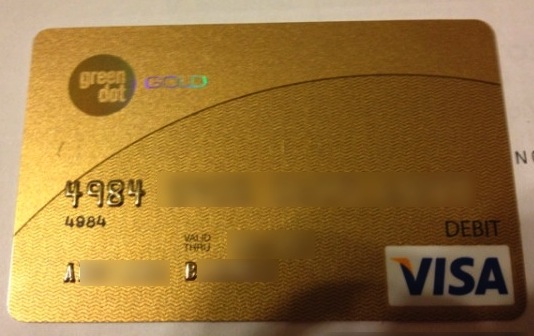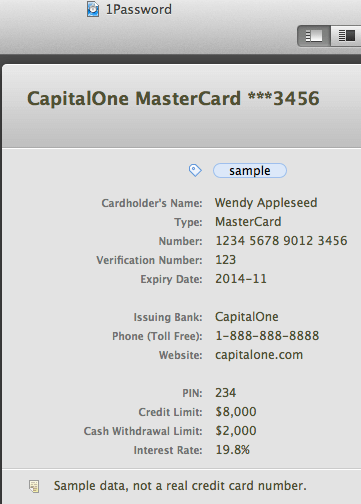
Yes, the stories are true, and no, this isn’t The Onion. People are, once again, displaying their affinity for tweeting photos of things that should never be tweeted.
Let’s set the scene and put you in the shoes of a number of today’s (possibly young, possibly naïve) Twitter users: you get your first debit card, you’re excited, you want to tell your friends. But who calls or even texts in private anymore? So you take a quick picture of your newfound glory and power, then tweet about it to not just your friends, but the world—credit card number, your name, and the card’s expiration date; the works.
Don’t believe me? A new Twitter bot, @NeedADebitCard, has been retweeting these posts, and plenty of them.

The card that you see at right was posted publicly to Twitter. Note that I’m the one who actually took the precaution of blurring the number, name, and other details. In the original tweet and the many others like it, all of those are fully visible.
Considering that credit card details (along with verification codes, and billing addresses) can be bought on the black market for about one US dollar a piece if you buy in bulk, posting these really isn’t going to be tragic. Most people’s credit card details have been stolen a dozen times over (mostly through breaches of traditional merchants). But tweeting these certainly reflects some bad habits. For the record, the AgileBits store does not keep a copy of your full credit card numbers when you purchase through us. And when you purchase through iTunes or the Apple Mac Store, then we get no information about you or your purchase at all.

Fortunately, you, my informed 1Password-using reader, can keep your credit and debit card details safely stored in the 1Password Wallet instead of posting them to Twitter or Instagram.
I laughed, but I shouldn’t have
I must confess that I laughed when Stu, my colleague here at AgileBits, pointed these out. If we want to stop people from making poor security decisions (and we certainly do), then we need to understand why people make them in the first place. Of course, some people don’t fully understand the public nature of Twitter, and that certainly plans a role in many cases. But there are other aspects of human nature at play.
There are times, and I think this is one of them, when we can’t blame the users. Instead, the blame falls with the designers of the systems that people must use. But before I talk about credit and debit cards, let me talk about Social Security numbers.
Social Security numbers and identity
For those of you outside of the United States who aren’t familiar with US Social Security numbers, they very roughly correspond to national insurance numbers or national identity numbers. They are officially used as tax payer identification numbers, among other things.
When the system was first set up, Social Security numbers were not at all secret. They were used both by banks and by employers so that income could be reported to the tax authorities. Indeed, like many people, I included my Social Security number on a résumé back in the 1980s as a courtesy to prospective employers. These numbers were used for identification in the same way that a name is, except that there are plenty of people who share my name, while I should be the only one with my Social Security number. Knowing my Social Security numbers was never intended to prove my identity. In other words: knowledge of the number was not supposed to be used for authentication.
Let’s consider this distinction between “identification” and “authentication”. Identification is how you figure out who you are talking about. Authentication is how you test whether someone really is that person. For a typical website, your username (or email address) serves to identify you, while your password is used to authenticate that identity. You may or may not wish to make your username public, but you certainly don’t want to make your password public.
Through a convoluted history that I won’t go into (in short, blame the banks), Social Security numbers switched away from being used merely for identification; the came to be used for authentication as well. They got used in a way that they were never designed for. This led to various problems, a number of new laws, and simply helped to muddle the distinction between identification and authentication.
Credit cards are more confusing
When credit cards and debit cards were originally designed, the numbers were pretty much for used only for identification, though there were exceptions. People would authenticate themselves by having physical possession of the card and by a producing a signature with a pen on a piece of paper. Certainly there was a lot of scope for fraud which meant some care was needed in not making the identity numbers all too public, but still the card numbers were not designed as authentication.
But then we started using credit cards remotely, first by making payments over the telephone and later for use over computer networks. Neither physical possession of the cards nor a signature on paper could be used for authentication any more. So the card numbers themselves, along with the three digit security (CVV), codes became the means of authentication. As with Social Security numbers, we ended up using a piece of information for authentication that was never designed to be used that way.
Here we go again. This time with checks
Over the past few years I found that when I telephone my bank, and after they have identified me, they request my checking account number. It appears that knowledge of my checking account number is now being used as part of their authentication system. Again, account numbers were never meant for this purpose. Indeed my checking account number is printed on every check I write. These are not secret.
The system that we all use has been giving people mixed messages about what is and isn’t secret. Or it’s been trying to use non-secret information in ways that are only appropriate for secrets. On one hand we are told to keep our credit card numbers secret, while on the other hand we are conditioned to toss over those numbers to any hotel, clerk, or waiter.
Helping people get things right
This misuse of Social Security and credit card numbers evolved through a process of changing scenarios and needs at the time, making do with what was available. It’s not a surprise that the system is far from what we would expect if we designed in intelligently from scratch, so of course our existing, incoherent system is going to cause confusion.
When we do have the opportunity to design something from the ground up, we have the responsibility to ensure that it is easy for people to behave securely. We may not always be able to fully succeed in that attempt, but it must be a guiding design principle for anyone who wants security systems to work for people.
Finally, when we observe people systematically behaving insecurely, we have to ask not “how can people be so stupid” but instead “how is the system leading them to behave insecurely.” Maintaining a clear distinction between non-secret identification information and secret authentication information would be one place to start.
Join the discussion in our forums
I’ve created a forum topic to discuss this article. Please join us there.

 by Jeffrey Goldberg on
by Jeffrey Goldberg on
